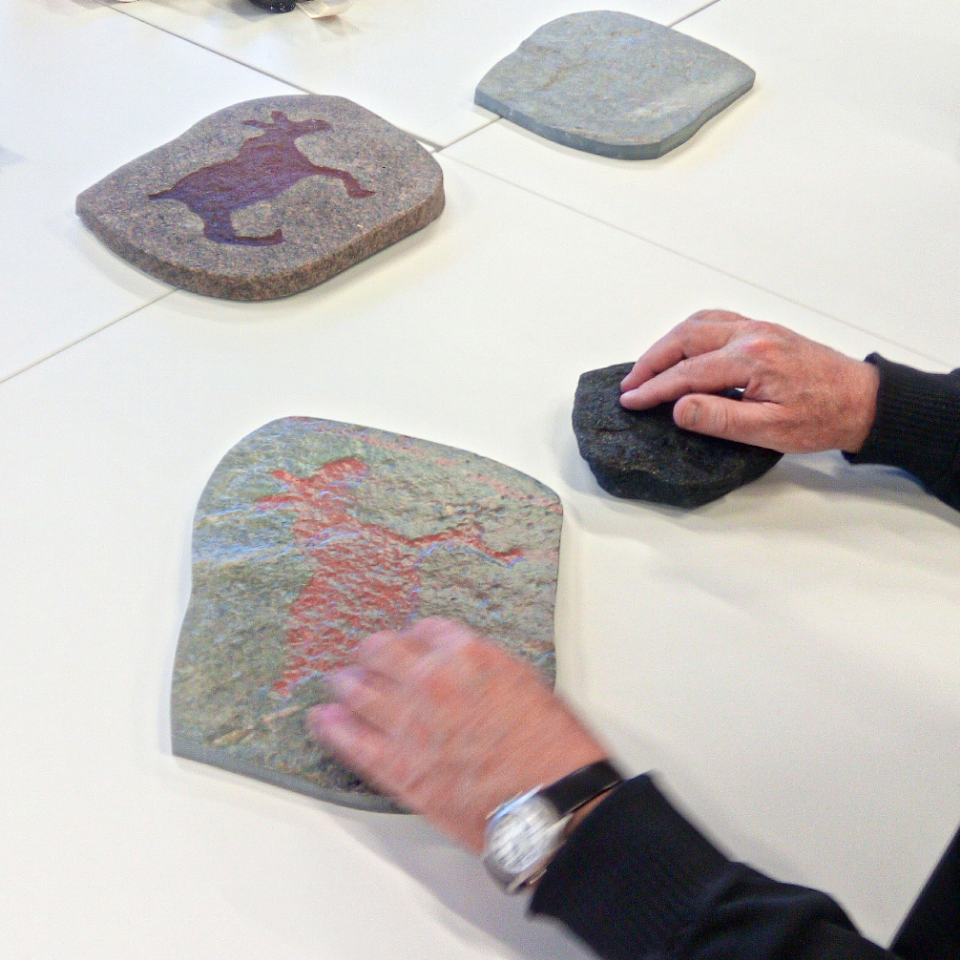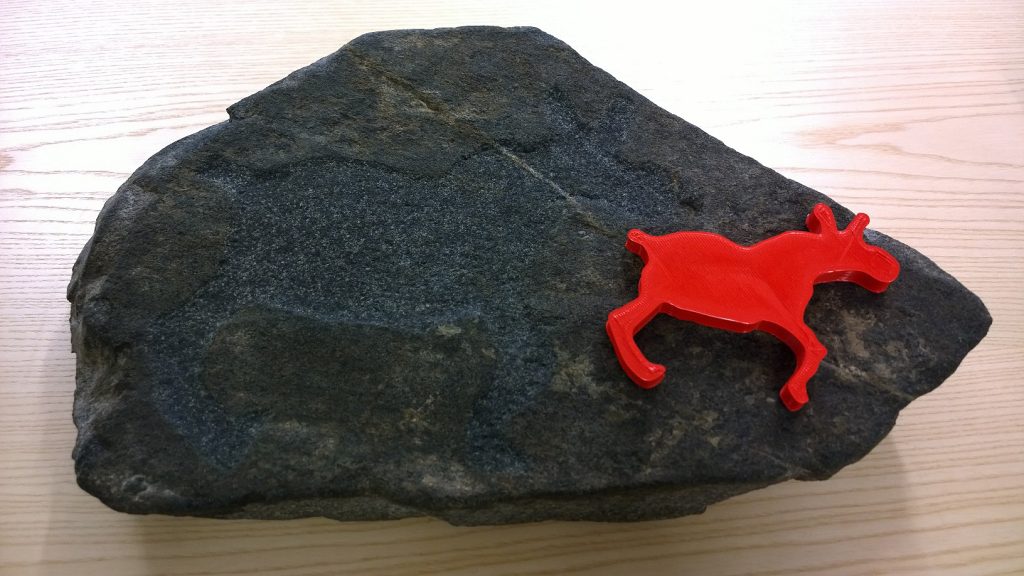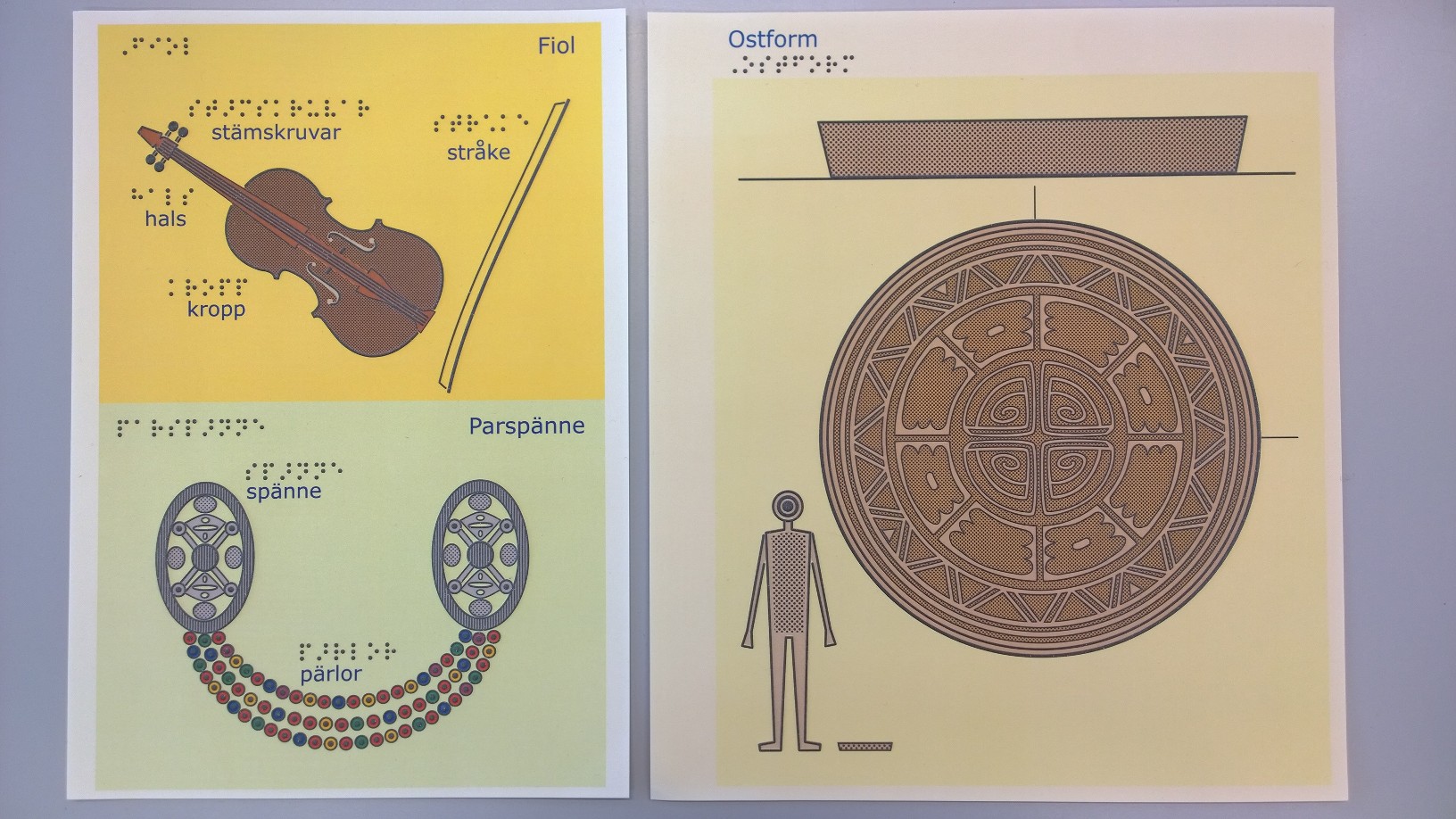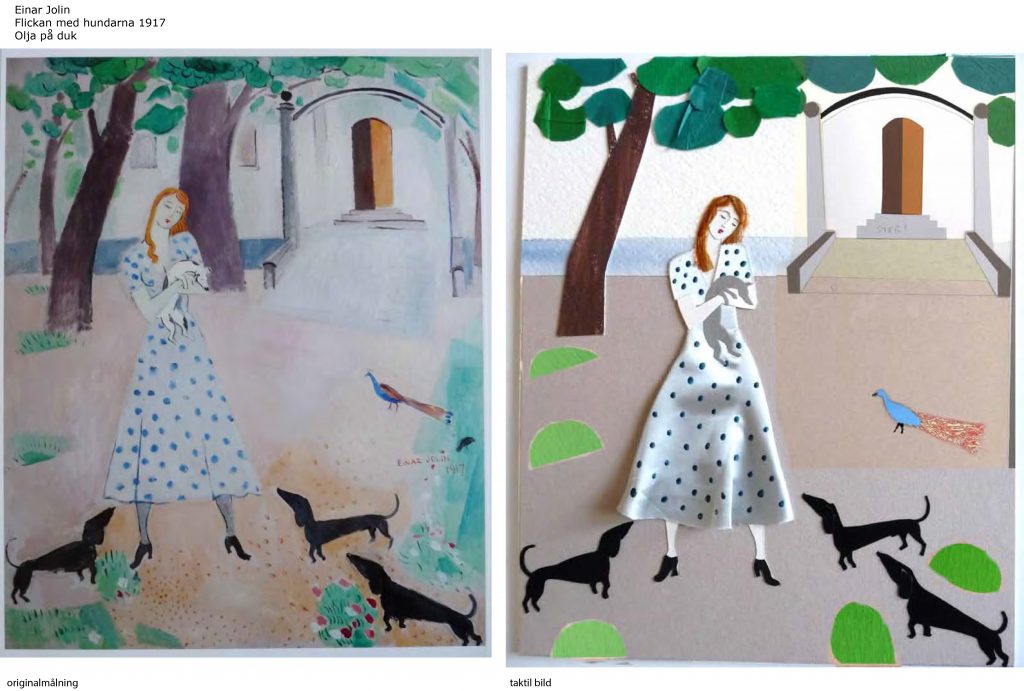
2. Tactile accessibility
The word tactile describes the transfer of information or sensations by touch. As many cultural heritage objects neither can nor may be touched, a 3D model can be a way of creating an accessible tactile representation of the object.
3D models can also be used as prototypes for the manufacture of copies in other materials. For persons with visual impairments, the ability to use a scaled-down model to also feel the object with their hands can be crucial for understanding a larger object.

Tactile translations can also be done using 2D objects, such as photos or paintings, by turning them into reliefs with varying depths and structures. One common method is to use swell-paper, which can turn an image into a relief through heat treatment. Another way to make 2D pictures tactile is to create “collage” pictures. Photos can also be made tactile and visually accessible by adding transparent relief layers on top of them.

